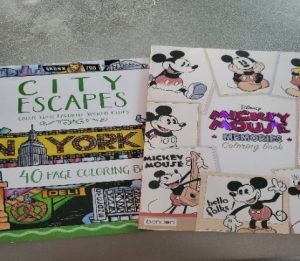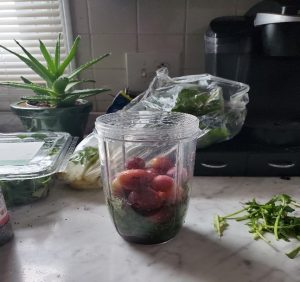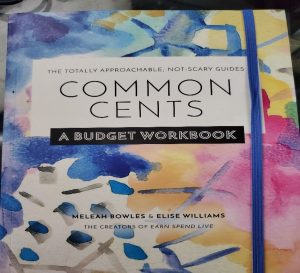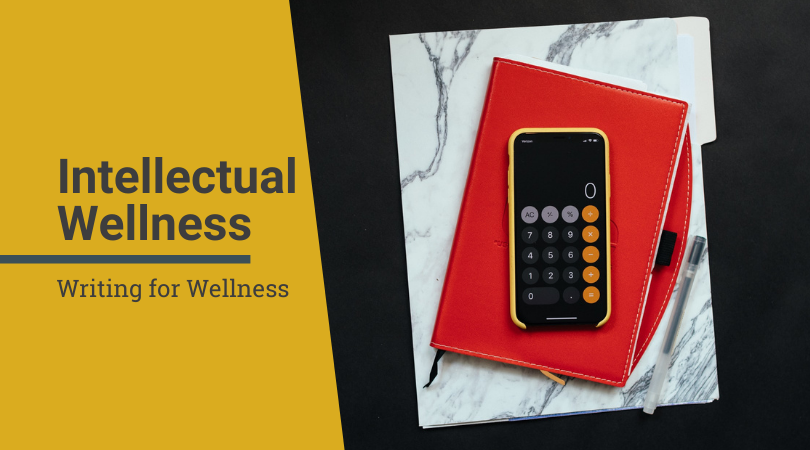SAMHSA defines the intellectual wellness dimension as “keeping our brains active and our intellect expanding.” This broad definition encourages us to engage in creative and mentally stimulating activities while expanding our knowledge and sharing our skills with others. As I break down this definition internally, I think of the many avenues this dimension can be developed (through academics, cultural involvement, community involvement, and personal hobbies), and I think to myself, “what have I done over the past year to cultivate this dimension? Wait, actually, why haven’t I focused on this more? Oh wait, that’s right, that whole pandemic thing.” Yes, indeed. It’s hard to believe that in just a few weeks, we will be coming up on the 1-year anniversary date of the New York State on Pause order going into effect (you know, the date when we all started to take COVID-19 just a little bit more seriously). It is almost even more sadly unbelievable that 1 year later and we are, for the most part, still in the same place.
Over the past year, we have all had to make adjustments in our lives to adapt to a new reality to keep ourselves and others safe. One area in which I have had to adjust is becoming much more intentional about taking care of myself. Due to the increased isolation, lack of socialization opportunities, and increased anxiety, I was forced to think more intentionally about what I need to do to help myself survive this pandemic. I decided one way I could do this is to re-engage with hobbies I already had (and that I know make me happy/keep me well) but also (with the increases in extra home time), I figured I’d flex my creative muscle and explore some new skills/challenges as well. I think it’s worth noting that though this blog’s primary focus is intellectual wellness, these examples truly illustrate the mutual dependence of the 8 Dimensions of Wellness. What I mean by this is, as my intellectual health expanded, I was able to develop personal resources that work together with the other realms of wellness in order to maintain balance during this hectic time. Here are some of the fun, creative activities that helped this girl survive the pandemic:

Adult Coloring
Ok, so I know it’s just coloring—but seriously, if you haven’t tried it, try it! While coloring seems like such a simple exercise, the science out there does back up a host of benefits attributed to it. Most notably is the inherent state of mindfulness the activity promotes. Adult coloring images typically include complex designs and thus require concentration on behalf of the individual to fill in those minute details. It requires focus, and I can personally attest that it would force me to slow down and pay attention only to what was in front of me. Aside from all of that, coloring is simply fun! During a hectic year filled with a lot of anxiety and worry, being able to displace those negative emotions with the simple emotions of happiness and joy that come from creating a personalized art piece (yes, my coloring pages are considered art!) was very welcome.

Cooking (Healthy Recipes)
Cooking has always been a hobby of mine. However, as I began to think more intentionally about good self-care, I set a goal to take advantage of my work-from-home status to A. cook more meals at home and B. challenge myself to insert more healthy ingredients. Taking on this goal was initially challenging, as I had to do research on healthy recipes, watch YouTube videos on how to chop fresh fruit and vegetables, and taste test new ingredients. Unbeknownst to me, I was in the process of expanding my knowledge of this topic and thus building my intellectual health. Learning to create healthy eating patterns has been particularly prideful for me as my skills have now put me in a position where I can teach my other household members to do the same, thus creating a healthier living environment for us all.

Creating a Monthly Budget
Unlike the other examples listed, focusing on one’s finances doesn’t sound like much fun. However, seeing the direct impact of the pandemic on my and other loved one’s finances, I figured the time was right to finally learn how to create a proper budget. Going beyond just knowing how to pay bills and make money, I really wanted to learn the best strategies for saving money, preventing debt, and doing all the big-girl stuff like learning to buy a home. Having grown up in a community with an underfunded public-school system, money management/budgeting skills were not taught; thus, I knew that this would be an undertaking that would require some mentorship. My family and friends became a great resource in helping me review my monthly spending and reminding me of those little spending habits I forget whenever I try to convince myself that I’ve been a responsible adult. Another resource I found helpful was the book Common Cents by Meleah Bowles & Elise Williams. This book aims to break down long-term financial health concepts in an approachable way and with the use of aids such as worksheets and step-by-step guides. Using these resources to help expand my knowledge of this subject was an extremely empowering experience. During a pandemic, where there are often feelings of very little control, creating this budget allowed me to feel in that moment that I at least had a little bit of control over something so important in my life.


